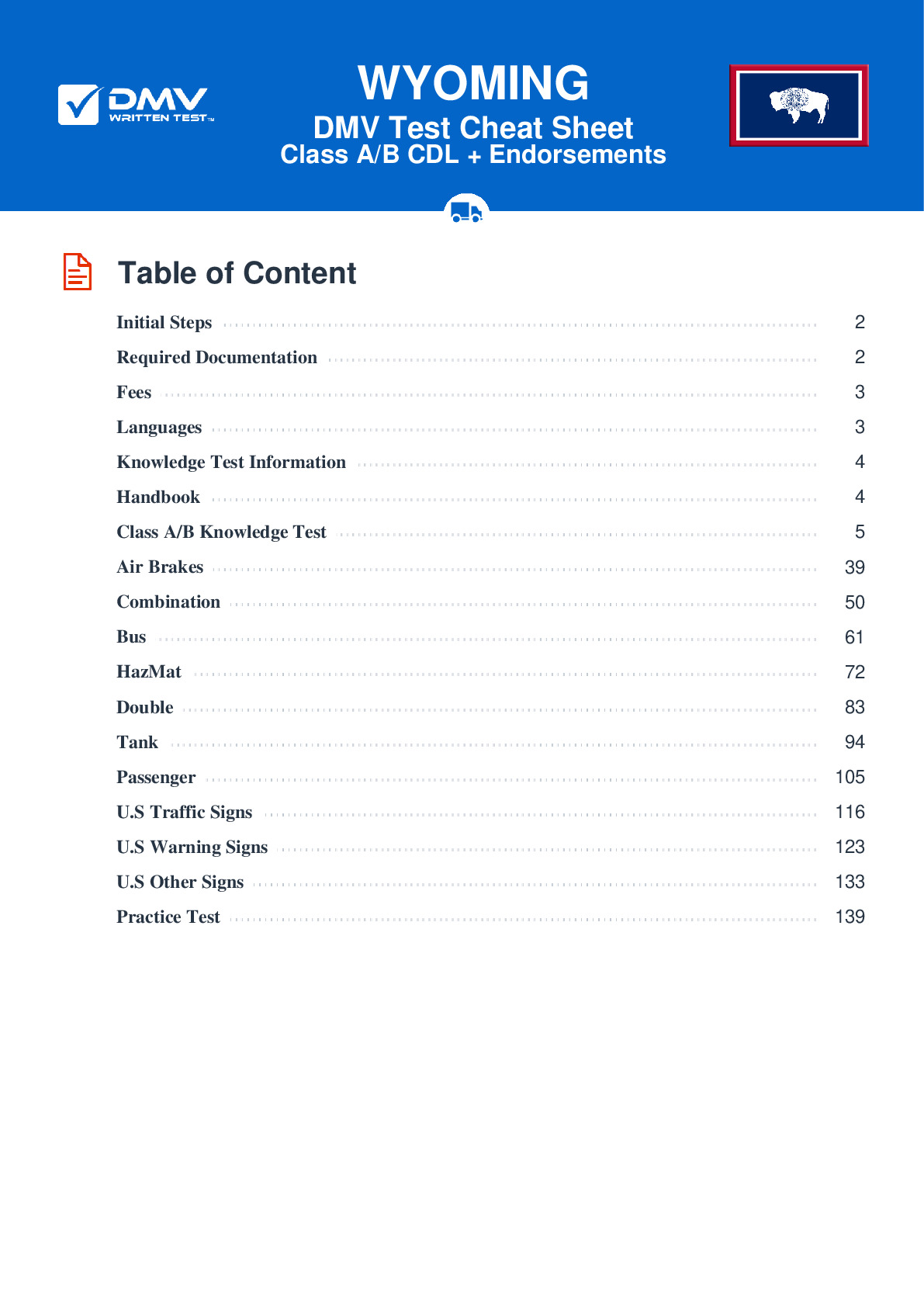Air Brakes
This endorsement is required for driving a vehicle with air brakes. To receive this endorsement, applicants must pass a written test. The test consists of 25 multiple choice questions. Each question has three or four answer choices. To pass, the applicant must answer at least 20 questions correctly. Test questions come from the Wyoming Driver License Manual for Commercial and Heavy Vehicles. Questions come from the chapter covering: Air Brakes. The Air Brakes endorsement may be used with the Class A, B or C CDL.
Number of Question
Passing Score
7. The parking brake in a newer vehicle is applied by:
Explanation
In newer vehicles with air brakes, the parking brake is controlled by a yellow, diamond-shaped knob. The driver should pull the knob outward to apply the parking brakes and push the knob inward to release them.
8. When traveling down a steep downgrade:
Explanation
On long and/or steep downgrades, you should primarily use engine braking to control the speed of your vehicle. Use your brakes only as a supplement to this effect.
9. What tells you how much pressure is in your vehicle's air tanks?
Explanation
A vehicle that is equipped with air brakes must also be equipped with a supply pressure gauge. This gauge tells the driver how much air pressure is in each of the vehicle's air tanks.
10. If the spring brakes are activated, you should never:
Explanation
Never apply the brake pedal if your spring breaks are activated. Brakes can be damaged if they are subject to both springs and air pressure.
11. To ensure normal stopping power, drivers of vehicles equipped with a front brake limiting valve should:
Explanation
Some pre-1975 vehicles have a front brake limiting valve, which has "normal" and "slippery" settings. The idea behind these valves was to limit the air pressure available to the front brakes when driving on slippery surfaces, and thereby reduce the danger of a front-wheel skid. Studies have found that this is not actually a concern, so if your vehicle has a front brake limiting valve, leave it in the "normal" position.
12. When using the controlled braking method in an emergency situation, you should:
Explanation




